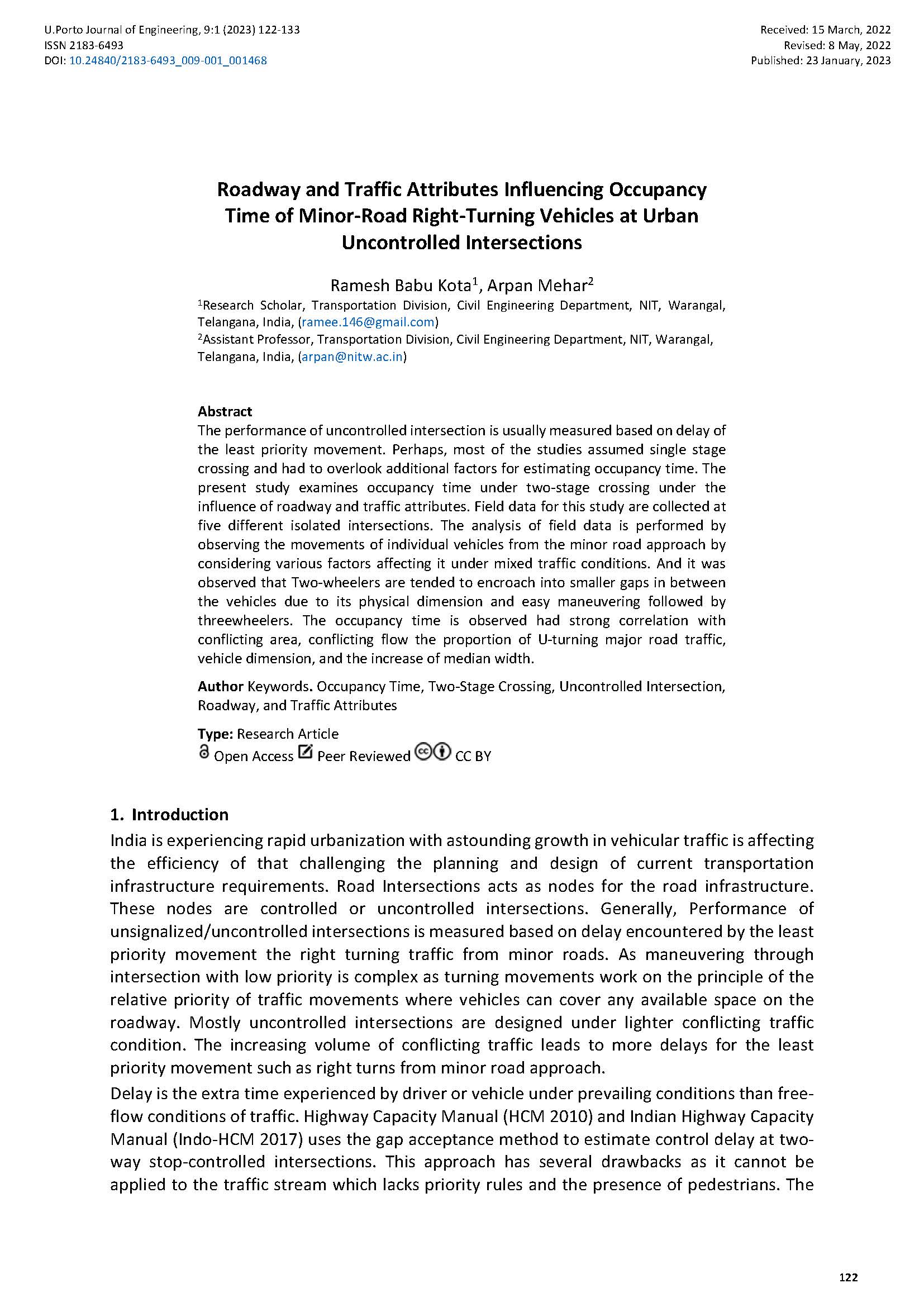Roadway and Traffic Attributes Influencing Occupancy Time of Minor-Road Right-Turning Vehicles at Urban Uncontrolled Intersections
Main Article Content
Abstract
The performance of uncontrolled intersection is usually measured based on delay of the least priority movement. Perhaps, most of the studies assumed single stage crossing and had to overlook additional factors for estimating occupancy time. The present study examines occupancy time under two-stage crossing under the influence of roadway and traffic attributes. Field data for this study are collected at five different isolated intersections. The analysis of field data is performed by observing the movements of individual vehicles from the minor road approach by considering various factors affecting it under mixed traffic conditions. And it was observed that Two-wheelers are tended to encroach into smaller gaps in between the vehicles due to its physical dimension and easy maneuvering followed by threewheelers. The occupancy time is observed had strong correlation with conflicting area, conflicting flow the proportion of U-turning major road traffic, vehicle dimension, and the increase of median width.
Downloads
Article Details

This work is licensed under a Creative Commons Attribution 4.0 International License.
Authors who publish with this journal agree to the following terms:
- Authors retain copyright and grant the journal right of first publication with the work simultaneously licensed under a Creative Commons Attribution License that allows others to share the work with an acknowledgement of the work's authorship and initial publication in this journal.
- Authors grant the journal the rights to provide the article in all forms and media so the article can be used on the latest technology even after publication and ensure its long-term preservation.
- Authors are able to enter into separate, additional contractual arrangements for the non-exclusive distribution of the journal's published version of the work (e.g., post it to an institutional repository or publish it in a book), with an acknowledgement of its initial publication in this journal.
- Authors are permitted and encouraged to post their work online (e.g., in institutional repositories or on their website) prior to and during the submission process, as it can lead to productive exchanges, as well as earlier and greater citation of published work (See The Effect of Open Access).

